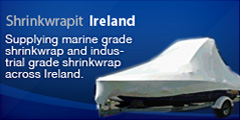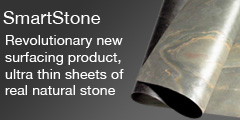Airblast Steel Abrasives
Choosing The Correct Abrasive Medium
The medium used in a cleaning or peening operation is the most important factor. It is therefore vital to select the correct size, shape and hardness for the particular requirements specified.
Hardness / Toughness
The degree of hardness required is determined by the speed of clean required, the type of contaminant to be removed, the surface finish and profile required and the operational costs involved. Abrasive hardness is important because hard- ness, by definition, is resistance to deformation. So the harder the pellet, the less it deforms and the more it performs useful work in deforming the work surface. However, energy is wasted in the fracturing of pellets so there is no advantage in using an abrasive which is hard, but also extremely brittle. Maximum hardness combined with a low breakdown rate is required for optimum results. Abrasive hardness correlates directly with cleaning speed in that the harder the abrasive, the faster it cleans.
Hardness is also an important factor in cleaning quality, particularly when the work is intricate and has deep cavities. The harder the abrasive shot, consistent with lack of brittleness, the greater its ability to ricochet. Areas of parts that cannot be cleaned by the direct blast depend on rebounding abrasive for adequate cleaning. Abrasive hardness, therefore, is an important factor in cleaning economy because it determines the length of cleaning cycles and the quality of the resulting finish.
Shape
The particle shape is determined by surface finish and profile requirements, type of contaminant to be removed and pre- vention of distortion through peening. The shape of an abrasive when new is not always the same as when in the operating mix. Steel shot remains round throughout and, therefore, produces minimum wear in the machine. Most grits remain angular to give an effective etching action, though GP grit rapidly changes from angular to round when in use, thereby combining the performance capabilities of both grit and shot. GL grit remains angular, but loses its sharp edges during service optimising rapid cleaning without excessive wear in the plant. It can be seen, therefore, that the shape of the pellet is an important factor, particularly in respect of how that shape behaves during service.
Size
Given that impact treatment is based on kinetic energy, it follows that selecting a large pellet will give a greater impact than a small one and vice versa. The initial size selection, therefore, is very important for the process. The abrasive sup- plied by the manufacturer is predominantly one size. The size range in the operation is known as the ‘operating mix’ and consists of the nominal size shot or grit and the worn particles (shot) or broken down particles (grit). It includes pellets that, during the operation, become polished, work hardened and conditioned during their life developing into an optimum cleaning, or peening tool. The operating mix provides a balance of particle sizes for impact and coverage. Impact is pro- vided by the new abrasive or larger size pellets to remove heavy contaminant and coverage is provided by the medium and smaller pellets to remove light contaminant and, more importantly, to give the final finish to the work processed. This smooth finish is aesthetically pleasing and minimises the amount of material required for subsequent surface coa- tings, whilst retaining the required adhesion factor. This balance between impact and coverage is important and can only be maintained by regular additions of new abrasive, preferably at the abrasive breakdown rate, by the wheel hour or by the golden rule of ‘little and often’. It is also necessary to return back to the system any abrasive losses or carry-out from the machine. As a result, the number of particles per kg thrown will be higher, coverage will be improved, cleaning will be faster and blast time will be reduced. Economics are thus achieved in energy, wear and tear of equipment, abrasive consumption and reduced maintenance. To ensure such benefits with cast iron abrasives, the specification should always be the largest particle that will not cause damage to the component being cleaned.




